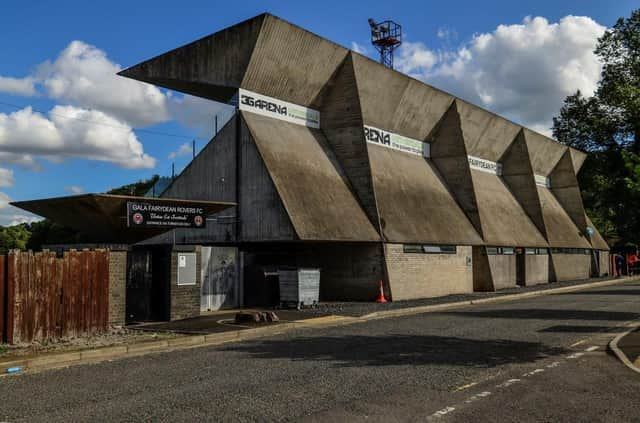It's back to the future for the iconic Gala Fairydean Rovers FC stand


Architect Peter Wormersley designed the A-Listed Gala Fairydean Rovers FC grandstand and it was officially opened on November 21, 1964, on the day East Fife were the visitors in what was termed a ‘glamour friendly’.
The stand was closed off in 2018 due to safety concerns with supporters now in a smaller 100-seater stand opposite the iconic structure.
Advertisement
Hide AdAdvertisement
Hide AdWormersley is recognised as one of the greatest architects of the 20th century, with a concentration of his buildings within 20 miles of each other in the Borders.
They include High Sunderland, a private house in Selkirk, Edenside doctor’s buildings in Kelso and the Sanderson and Murray office in Galashiels.
The Fairydean 500-capacity stand remains one of his most celebrated works, with Architecture in Britain Today describing it as “poetry and geometry fused to produce a building of rare quality”.
It has not been without its critics, however, with some reviling it as an eyesore reminiscent of buildings in Soviet-era Russia.
Advertisement
Hide AdAdvertisement
Hide AdBut time has not been kind to the structure, one of the first UK football stadiums to employ a cantilever design.
The stand is in poor condition with the concrete flaking in numerous locations and many of the timber windows frames rotten.
Additionally, the brick walls of the non-original extensions are subsiding and are in danger of collapse in future.
Now Scottish Borders Council has given the green light and allocated funding to reinforce the concrete stand and get it back in use again.
Advertisement
Hide AdAdvertisement
Hide AdMost of the work involves repairs and redecoration of the external fabric of the stand and the turnstiles, combined with a new roof coating and drainage work.
The work also includes the removal of the floodlighting tower, installed in 1989 and currently bolted to the top of the roof of the stand.
A report, from Edinburgh-based Reiach and Hall Architects, says: "Although the interior of the stand has been altered to a great extent, it’s still possible to find traces of the original interiors.
"Some of the original light fittings, door frames and door panels are visible.
Advertisement
Hide AdAdvertisement
Hide Ad"The traces, combined with descriptive clues in magazine articles from the 1960s, enable one to build a clear picture of how the interiors would have looked when the building opened.
"It is proposed to retain all the existing original features and to repair and restore them in a future phase.
“The current proposals will partially restore the stand to a condition that is closer to its original appearance.”